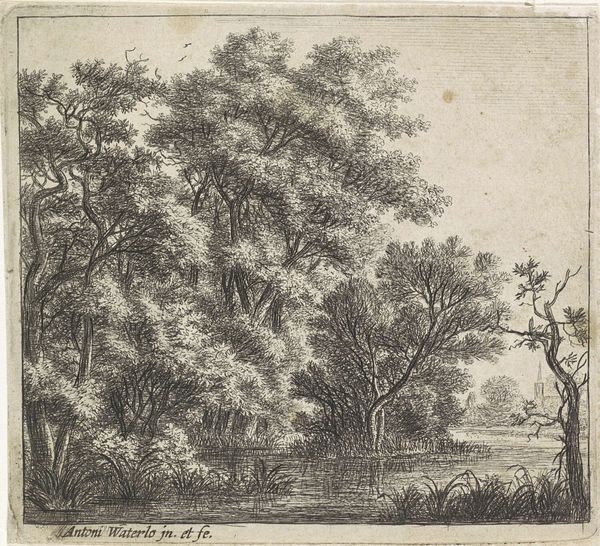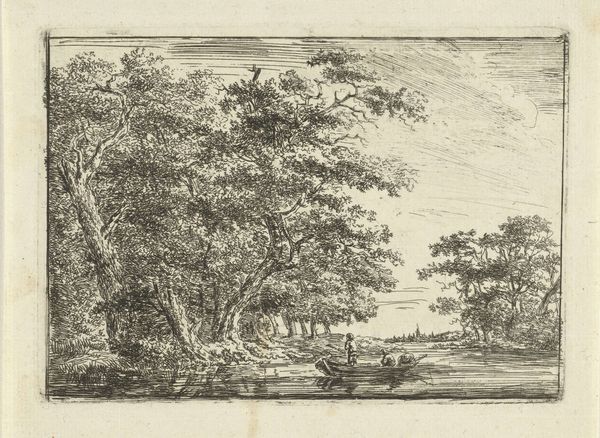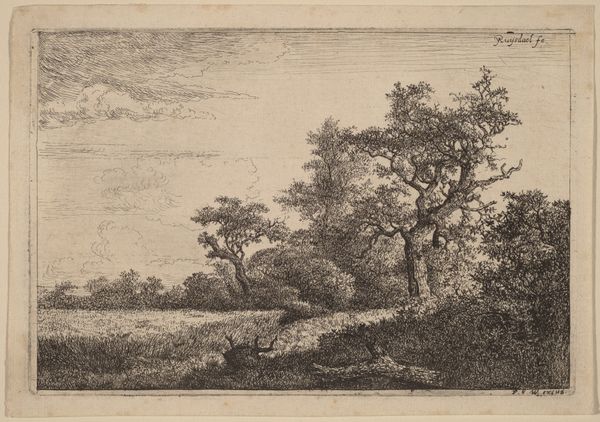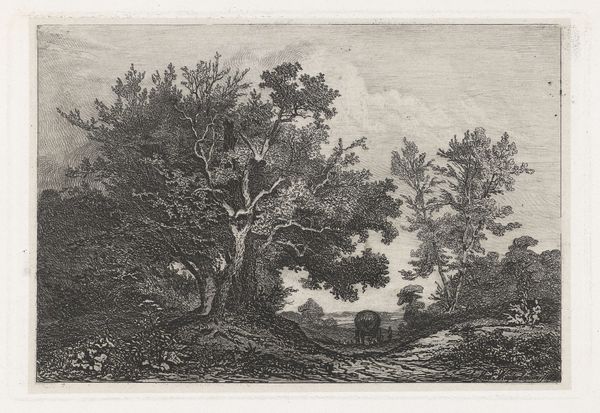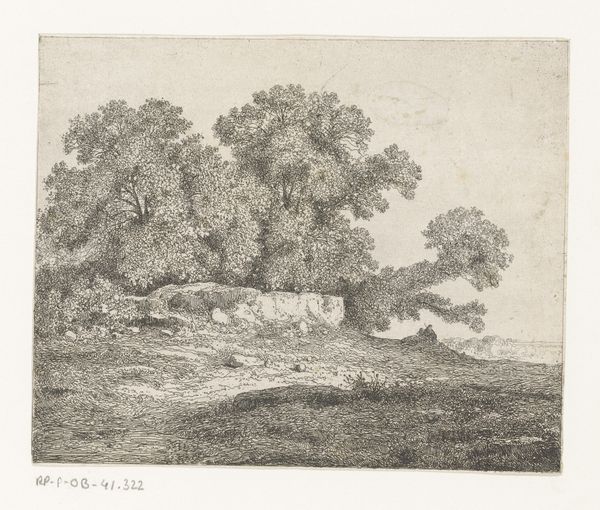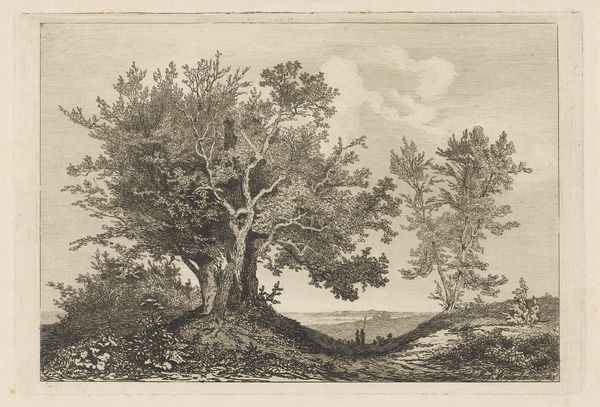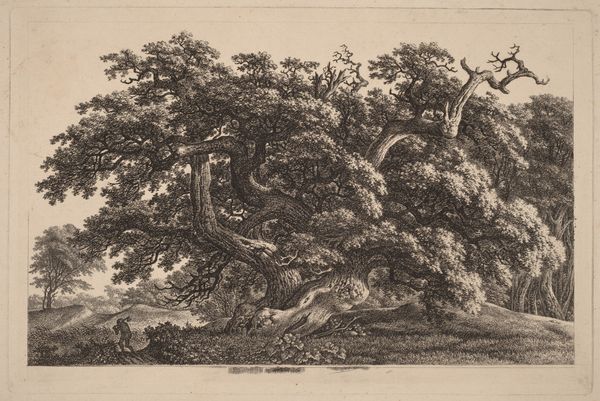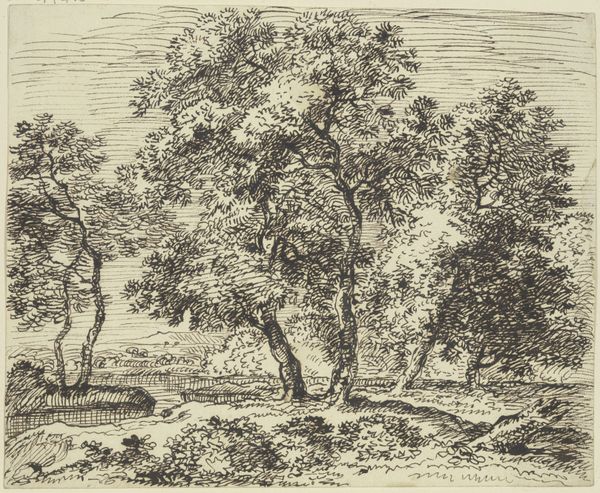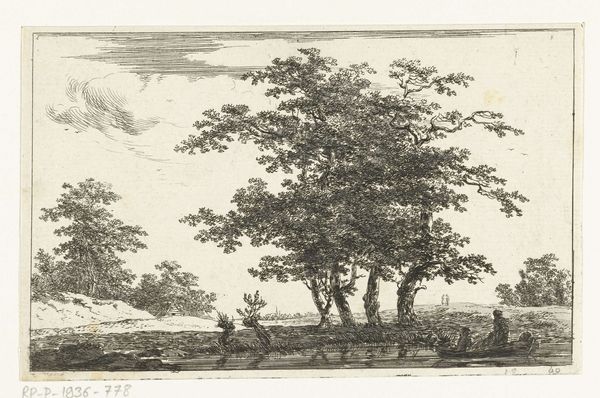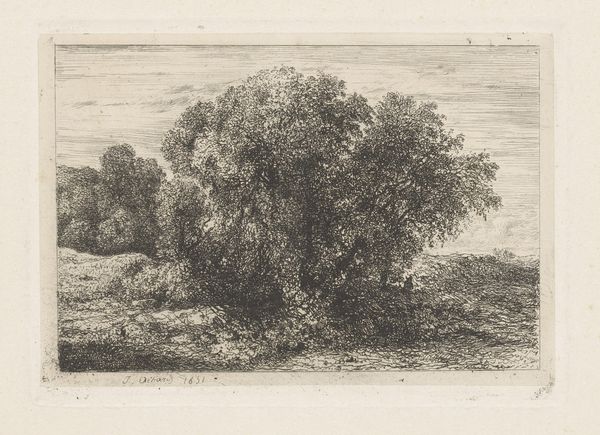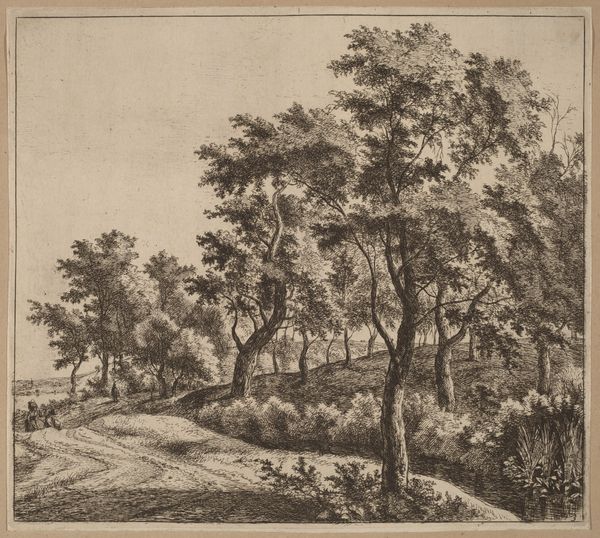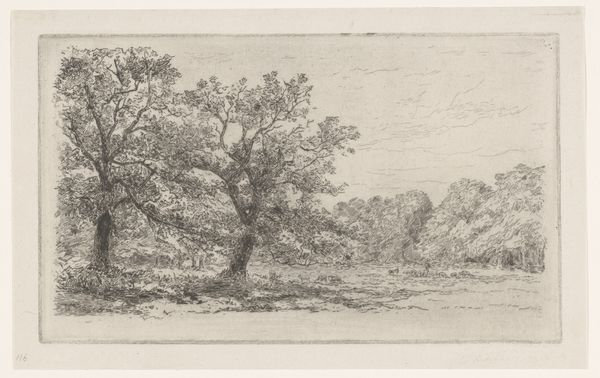
print, etching
# print
#
etching
#
landscape
#
realism
Dimensions: image: 6.99 × 10.8 cm (2 3/4 × 4 1/4 in.) sheet: 8.89 × 13.34 cm (3 1/2 × 5 1/4 in.) support: 24.13 × 30.48 cm (9 1/2 × 12 in.)
Copyright: National Gallery of Art: CC0 1.0
Curator: This etching is Carl Brenner's "Apple Trees," dating from around the 1870s to 1880s. Editor: It's strikingly melancholy, isn't it? The monochromatic palette, the dense network of lines, there’s a certain severity, an almost harsh realism at play. Curator: Brenner’s landscapes often depicted nature with an intimate knowledge, suggesting a deep connection to the land and its symbolic role in American identity. In many cultures, the apple tree symbolizes knowledge and immortality, its fruit promises abundance and life, though there's a darker side too. Editor: Interesting you mention the darker side, because while the image undeniably depicts rural tranquility, that’s also undercut by the rather unsettling texture, built up with short strokes to conjure a hazy atmosphere. Almost vibrating off the page. What kind of psychological impact was he aiming for? Curator: It's quite ambiguous. Apple trees were potent symbols for both progress and retreat at this time. The post-Civil War period wrestled with shifting agrarian values, with modernization threatening the idealized, simpler life, an imagined lost innocence. Brenner creates visual metaphors through landscape that mirror cultural anxieties. Editor: He does this with considerable mastery of form, by emphasizing contrast within a relatively narrow tonal range, creating an intense sense of depth within a rather shallow plane. Curator: Notice, too, how Brenner’s use of etching to replicate organic texture. It isn’t perfect replication of natural appearances; it has, I suspect, emotional or psychological implications for Brenner. It points toward the complexity of human-nature relations. Editor: Absolutely. The visual grammar gives texture and rhythm, evoking the very earthiness it depicts, despite its apparent simplicity. He's drawing, in effect, the unseen energies of that countryside. Curator: Brenner is reminding the viewer of interconnectedness of things in life. Each little tree contributes to a larger system in culture and nature. What remains after we're all gone? Editor: A somewhat disquieting yet intriguing distillation. It proves to me the medium of print can be surprisingly vital.
Comments
No comments
Be the first to comment and join the conversation on the ultimate creative platform.
